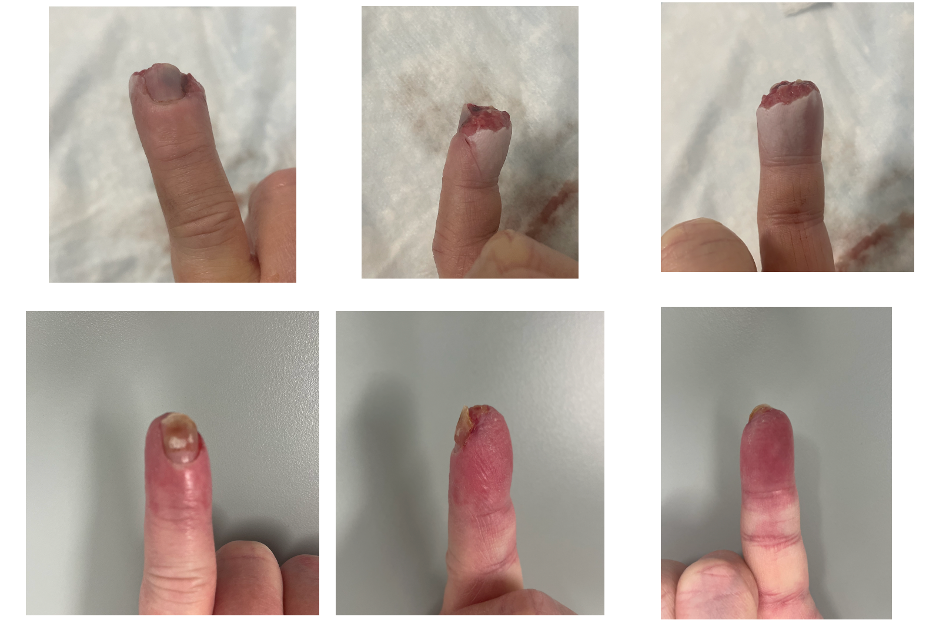Fingertip Amputations
Fingertip amputation refers to the partial or complete removal of the fingertip, which can result from a variety of causes, including crush injuries, cuts, and amputations due to power tool accidents. The injury can range from a minor abrasion to a complex wound involving the soft tissue, bone, and nail. The severity of the injury and the extent of the amputation will impact the treatment options and outcome. The goal of treatment for a fingertip amputation is to preserve as much function and sensation as possible in the affected finger and minimize scarring.
Causes of Fingertip Amputation
Fingertip amputations can be caused by a variety of accidents and injuries, including:
• Crush injuries: These occur when a finger is pinched or crushed by heavy machinery or objects.
• Cuts: These can result from a sharp object, such as a knife, or a sharp edge, such as a broken glass.
• Power tool accidents: These are common in industrial and construction settings, and can result in amputations of the fingertips.
• Fireworks injuries: Fireworks accidents can cause severe injury to the fingers and hands.
Treatments for Fingertip Amputation
The type of treatment for a fingertip amputation depends on the extent of the injury and the availability of the amputated tissue. The following are the most common treatments:
• Reattachment surgery: If the amputated tissue is available, it may be possible to reattach the fingertip through surgery. The surgery involves cleaning the wound, repairing the damaged blood vessels and nerves, and suturing the skin and soft tissue.
• Soft tissue coverage: If the amputated tissue cannot be reattached, a plastic surgeon may perform a procedure to cover the wound with skin and soft tissue from another part of the body, such as the forearm or thigh.
• Secondary Wound closure: The body heals without surgery. It typically takes 2-3 months but allows more sensation and often better outcomes than coverage treatment.
Outcomes of Fingertip Amputation
The outcome of treatment for a fingertip amputation depends on a variety of factors, including:
• Severity of the injury: The extent of the injury and the amount of tissue lost will impact the outcome.
• Promptness of treatment: Receiving prompt medical attention and treatment can increase the chances of a successful outcome.
• Age and overall health: Younger patients and those in good health are more likely to have a better outcome.
Fingertip amputations can have a significant impact on a person’s ability to perform everyday tasks and can cause physical and emotional distress. The type of treatment and the outcome depend on the extent of the injury, the availability of the amputated tissue, and the promptness of the treatment. With prompt and appropriate care, most people are able to regain some or all of the function and sensation in the affected finger.
Click Here for more information

